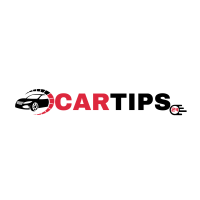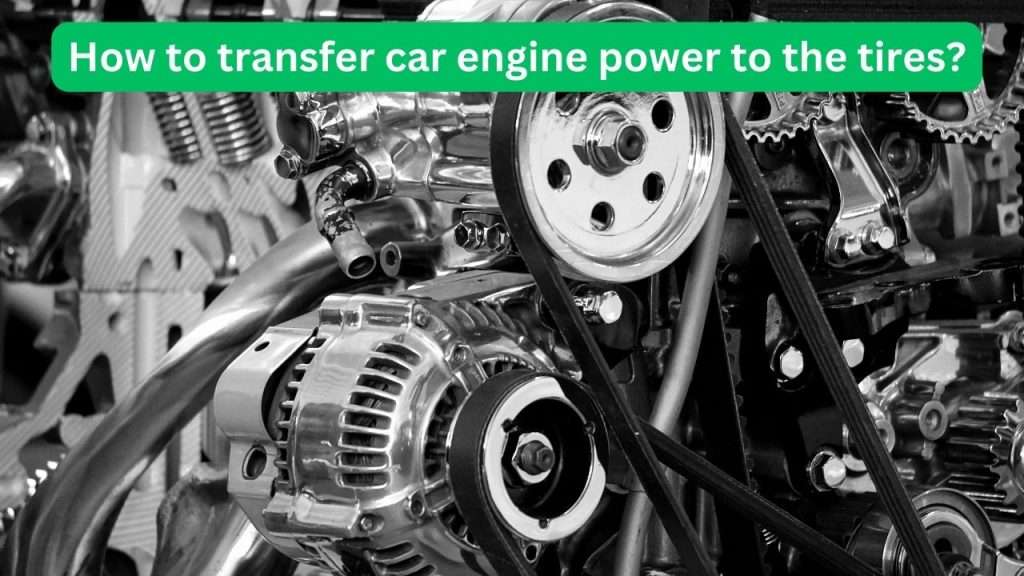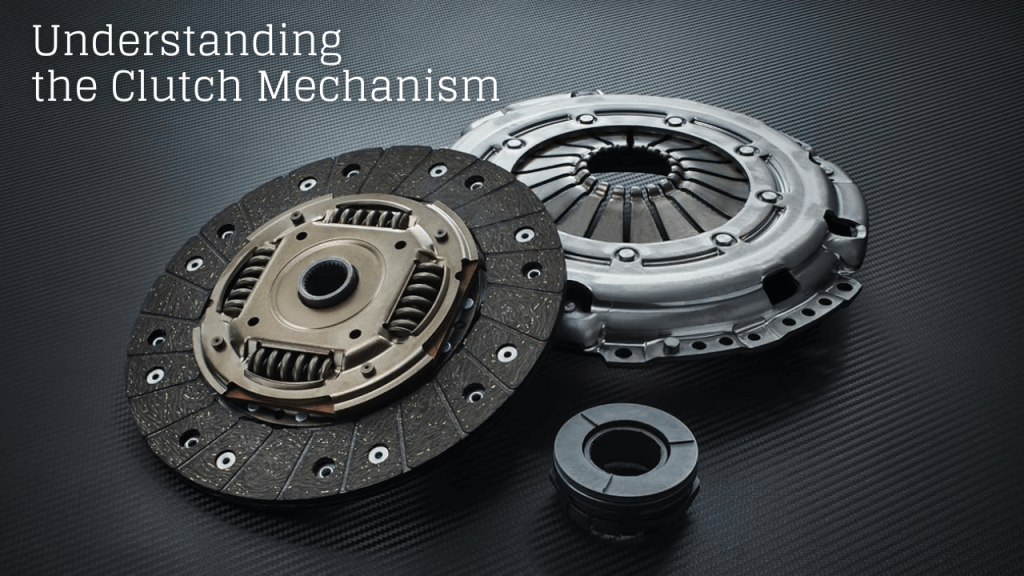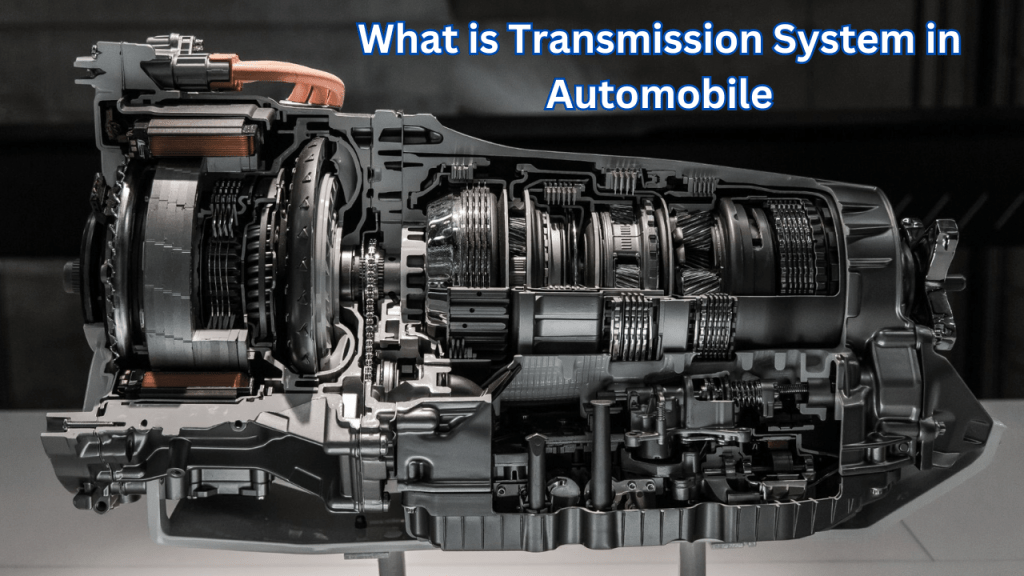Let’s learn what is power transmission device and how an engine transfers power to the wheels. Also, what are the characteristics of FF cars, FR cars, and 4WD cars?

What is Power transmission device – How does an engine transfer power to the wheels?
For a car to run smoothly, it is necessary to process the force generated by the engine and transmit it to the tire according to driving conditions. This power transmission device is responsible for this function. Power transmission devices include clutches, transmissions, differential gears, propeller shafts, drive shafts, disc wheels, and tires, each of which has different roles. Let’s learn each power transmission device’s role.
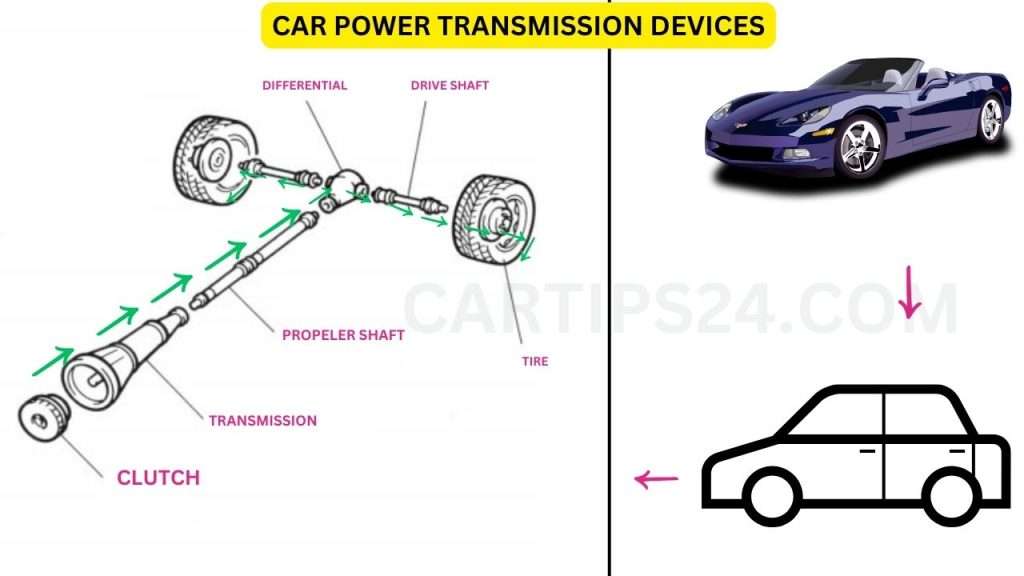
what is a clutch in a car?
A clutch Transmits the engine power and interrupts the engine power.
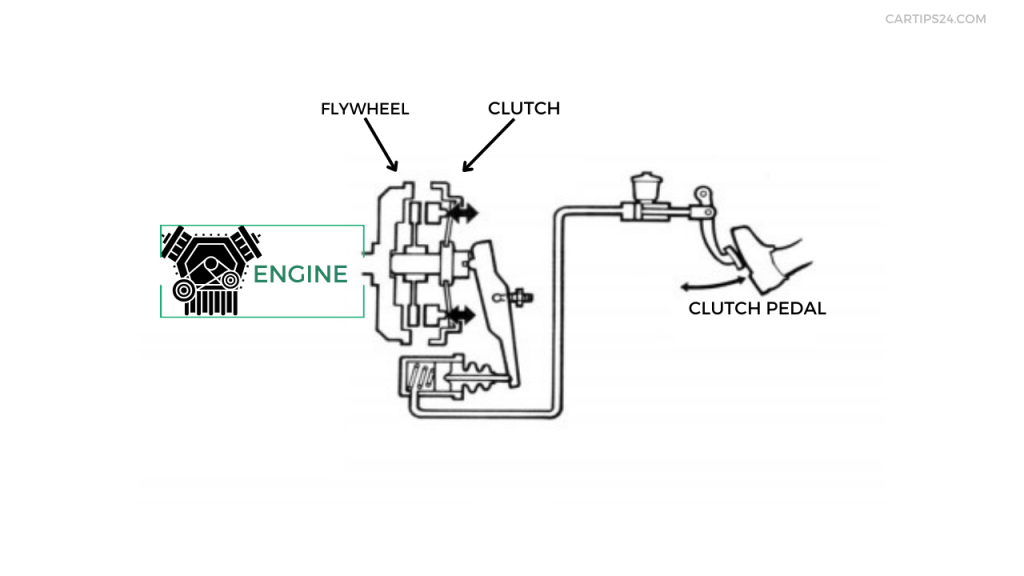
The primary role of the clutch is to transmit power generated by the engine to the transmission system. This transfer of power is essential for enabling the vehicle to move. Equally important is the ability of the clutch to interrupt the flow of power between the engine and the transmission. This interruption occurs when the driver disengages the clutch, typically by pressing the clutch pedal. The clutch facilitates the smooth engagement and disengagement of power transmission. When the driver engages the clutch, power is transferred to the transmission, allowing for smooth acceleration. Disengaging the clutch interrupts power flow, facilitating gear changes and controlled deceleration.( learn how does a clutch work?)
Enabling Gear Changes:- The clutch plays a crucial role in gear changes, allowing the driver to shift between gears smoothly. When the clutch is disengaged, the transmission is temporarily disconnected from the engine, enabling the driver to shift gears without causing damage to the gearbox.
Preventing Stalling:– In situations where the vehicle comes to a stop, such as at traffic lights or stop signs, the clutch prevents the engine from stalling. By disengaging the clutch, the connection between the engine and transmission is temporarily broken, allowing the engine to run independently of the wheels.
Enhancing Driver Control:- The clutch provides the driver with control over the power delivery to the wheels. By modulating the engagement and disengagement of the clutch, the driver can control the speed and power of the vehicle, especially during acceleration and deceleration.
What does a transmission do in a car?
Transmission Change the strength of force, change the number of rotations, and change the direction of rotation.
The transmission serves as a crucial component for adjusting the strength of the force generated by the engine. It allows for fine-tuning the amount of power delivered to the wheels based on driving conditions and the driver’s input. By providing different gear ratios, the transmission enables the vehicle to efficiently utilize engine power across a range of speeds. Another pivotal role of the transmission is to control the number of rotations or revolutions per minute (RPM) of the engine. The transmission’s role in changing the direction of rotation enhances the overall maneuverability and versatility of the vehicle.
Propeller shaft – What is propeller shaft?
Propeller shaft Transmit force from the transmission gear to the differential gear.
the propeller shaft is a critical component that bridges the gap between the transmission and the differential, facilitating the transfer of torque from the engine to the wheels. Its design allows for flexibility, articulation, and vibration control, ensuring an efficient and smooth power transmission process in a car.
The propeller shaft acts as a conduit for transferring torque generated by the engine to the vehicle’s wheels. The shaft is designed with flexibility to handle variations in suspension movement, ensuring a smooth and continuous power transfer even when the vehicle is in motion. The ends of the propeller shaft are typically equipped with universal joints (U-joints). These joints allow for movement and articulation, compensating for changes in the relative positions of the transmission and the differential. Propeller shafts are often balanced to minimize vibration and reduce the transmission of mechanical noise to the vehicle’s cabin.
What is a differential on a car?
Differential Change the direction of force, increasing force, and Adjust the rotational difference between left and right driving wheels. The differential is a crucial component in a car’s drivetrain, responsible for managing the distribution of power between the wheels, especially when the vehicle is turning. Let’s explore the key aspects of the differential,
Power Distribution– The primary function of the differential is to distribute power from the engine to the wheels. It takes the rotational force generated by the engine and splits it between the two drive wheels, allowing them to rotate at different speeds.
Epicyclic Gear System– The differential achieves its function through an epicyclic (planetary) gear system. It consists of a set of gears, including the ring gear, pinion gear, and side gears. These gears work together to allow for speed differentiation between the left and right wheels.
Stability and Control – The differential contributes to the stability and control of the vehicle. By allowing the wheels to rotate independently, it prevents skidding and wheel hop, especially during turns or when driving on slippery surfaces.
What is a drive shaft?
Drive shaft Transmit power to the tire.
The drive shaft is a critical link in the power transmission chain of a car. By efficiently transferring torque from the transmission to the wheels, it enables the vehicle to move forward and plays a crucial role in the overall performance and drivability of the vehicle.
-The primary function of the drive shaft is to transmit torque, or rotational force, from the transmission to the wheels of the vehicle.
-It plays a pivotal role in converting the power generated by the engine into the rotational force needed to propel the vehicle forward.
-In four-wheel-drive vehicles, the drive shaft is part of the system that distributes power to both the front and rear wheels, enhancing traction and stability on various terrains
Disc wheels
Disc wheels Transmit power directly to the road surface.
Disc wheels play a crucial role in the power transmission process by providing a direct connection between the vehicle and the road surface. The tire, mounted on the disc wheel, is the point of contact with the road. As the tire rotates, the disc wheel ensures that the power generated by the engine is efficiently transmitted to the road.
Configuration of Power Transmission Device
The structure of the power transmission device will change depending on the position of the engine of the car and the position of the tire (driving wheel) that transmits the power.
Let’s take a look at the configuration and characteristics of the power transmission device for FF, FR, and 4WD cars.
What is ff car?
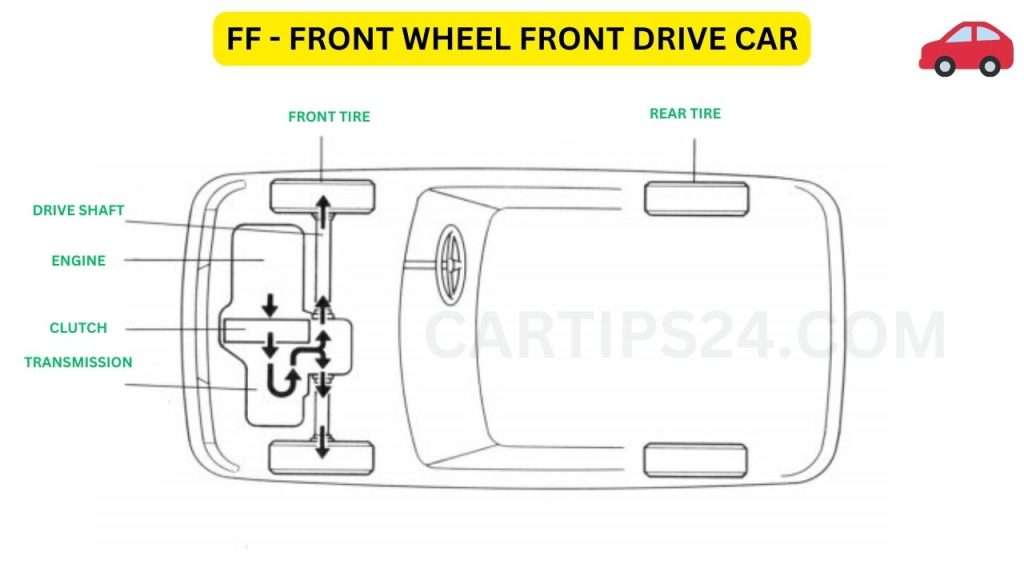
The engine mounts in the front of the car and it is driven by the front tires. Because the power transmission device of the FF car is relatively compact, the weight of the car can be reduced and the cabin space can be widened.
What is an FR car?
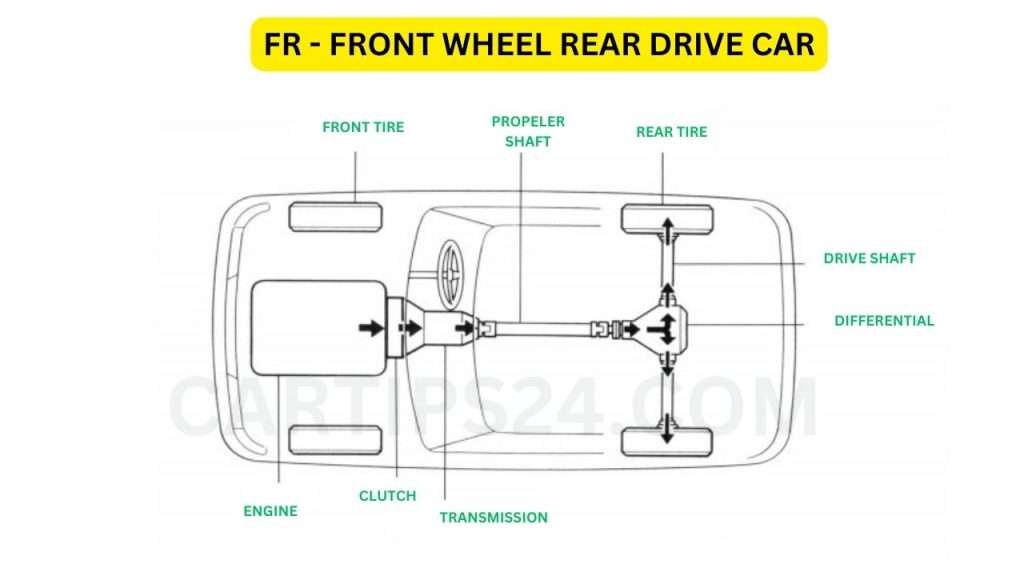
The engine mounted in the front of the car and it is driven by rear tires. Because the device that transmits the power from the engine to the rear part of the car is needed, the cabin space becomes smaller than the FF car.
4WD car
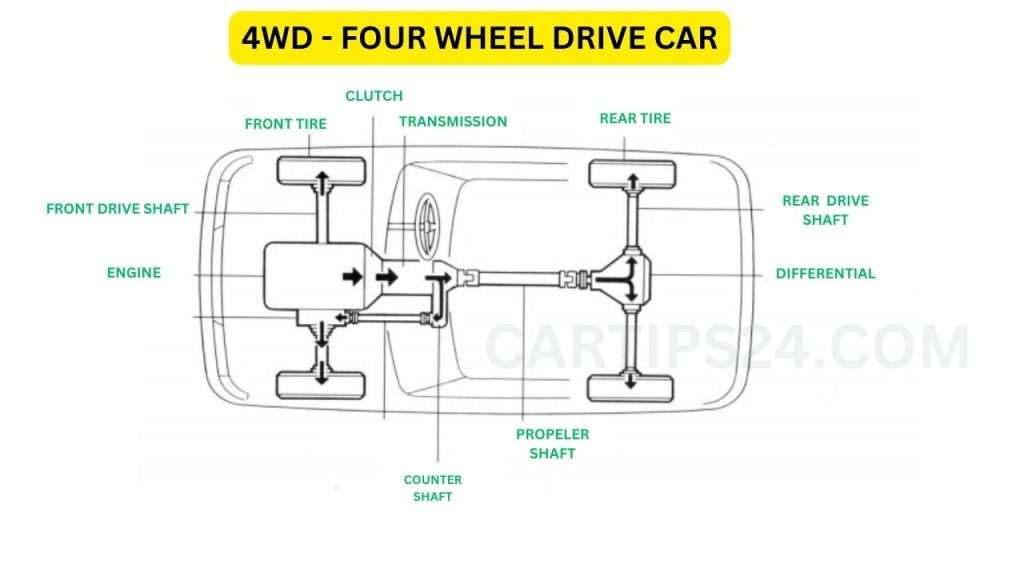
It is a car driven by four tires. Since the driving force is transmitted to all four tires in a 4WD car, it can run stably even on slippery roads. Because the equipment becomes complicated, the weight of the car becomes heavier than FF cars and FR cars.
